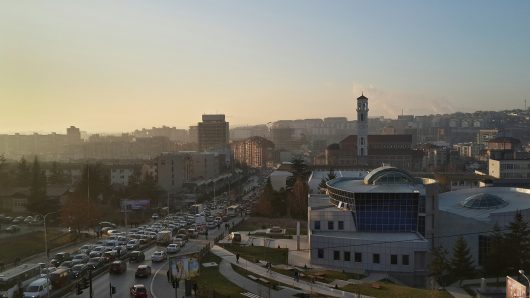10 Facts About Serbia Refugees

From 2015 through March 2016 refugees from countries including Syria, Afghanistan, Iraq and more traveled through Serbia on their way to Hungary and Croatia. The closing of the border led many people to think that the refugee crisis was over, but refugees from Bulgaria and the former Yugoslav Republic of Macedonia continue to arrive in Serbia daily. Below are 10 facts about Serbia refugees and the unprecedented crisis.
- Between May 2015 and March 2016, over 920,000 refugees from Greece, Bulgaria, the former Yugoslav Republic of Macedonia, Syria, Afghanistan and Iraq traveled through Serbia as they made their way to Hungary and Croatia.
- About 20.1 million euros in humanitarian aid from the EU helped provide emergency assistance at 16 government shelters. These shelters provide services including medical care, family-friendly shelter, clothing, food, water and security. Currently, aid is being used to improve living conditions at shelters. Previously, Serbia received 24.5 million euros in aid toward the refugee crisis.
- Winter weather and freezing temperatures as low as -20 degrees Celsius endanger the health and lives of as many as 1,500 refugees living in the streets or unheated temporary shelters. Sadly, 60% are unaccompanied minors. Many people are afraid to go to official shelters due to concerns that they will be deported.
- The Serbian government, the U.N. Refugee Agency, and other humanitarian agencies made room in heated shelters for 5,000 more beds.
- The Serbian government opened additional accommodations in mid-January, enabling 400 refugees, including women and children, to move from unsanitary improvised shelters to a clean shelter – 85% of refugees are now living in one of 17 government shelters.
- Humanitarian organizations are prohibited from helping refugees outside official shelters. A group of international volunteers called “Hot Food Idomeni” has found a way to help. They serve hot soup, ensuring that refugees living outside official shelters get a least one meal a day.
- The EU civil protection mechanism, along with 10 Member States, provided 246,000 relief items to Serbia.
- The government registered 815,000 refugees in 2015. There was a dramatic drop in the number of refugees arriving in Serbia after the closure of the “Western Balkan migration route” in March 2016.
- Since the closure of the “Western Balkan migration route” refugees have been stranded in Serbia. Many have stayed in one of 16 reception centers located in the west and south. Refugees are free to travel around the country. They can even apply for asylum.
- After the closure of the migration route, a small number of refugees from Bulgaria and the former Yugoslav Republic of Macedonia continued to arrive increasing the number of refugees from 2,000 in March 2016 to 7,550 in December 2016.
People flee war-torn countries hoping to find safe refuge within the borders of their neighbor. These 10 facts about Serbia refugees reveal what these brave refugees endure in their journey to find their safe refuge.
– Mary Barringer
Photo: Flickr
